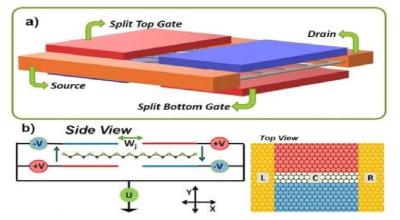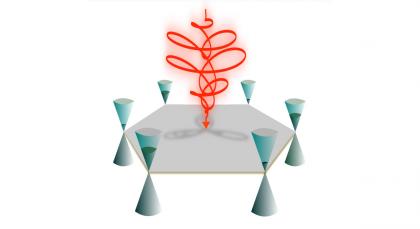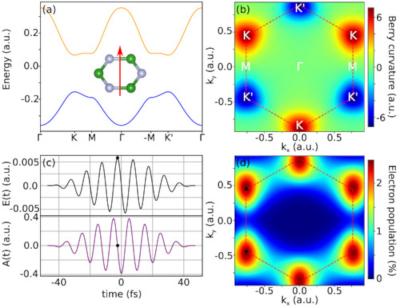Researchers discover ferro-valleytricity in five-layer graphene
Researchers from MIT, Harvard and Japan's NIMS have discovered that in a five-layer graphene arranged in a rhombohedral pattern, a rare state occus, a multi-ferroic state, in which the material exhibits both unconventional magnetism and an exotic type of electronic behavior, which the team has named "ferro-valleytricity".
The first time that ferro-valleytricity and unconventional magnetism are observed, in five layers of graphene. This is not occurring in single-layer graphene (or in two, three, or four layers). This state could lead to a future valleytronics device, a fast storage device that will be highly efficient, as the domains in such a device can be switched very fast with a very low-power electric field.






